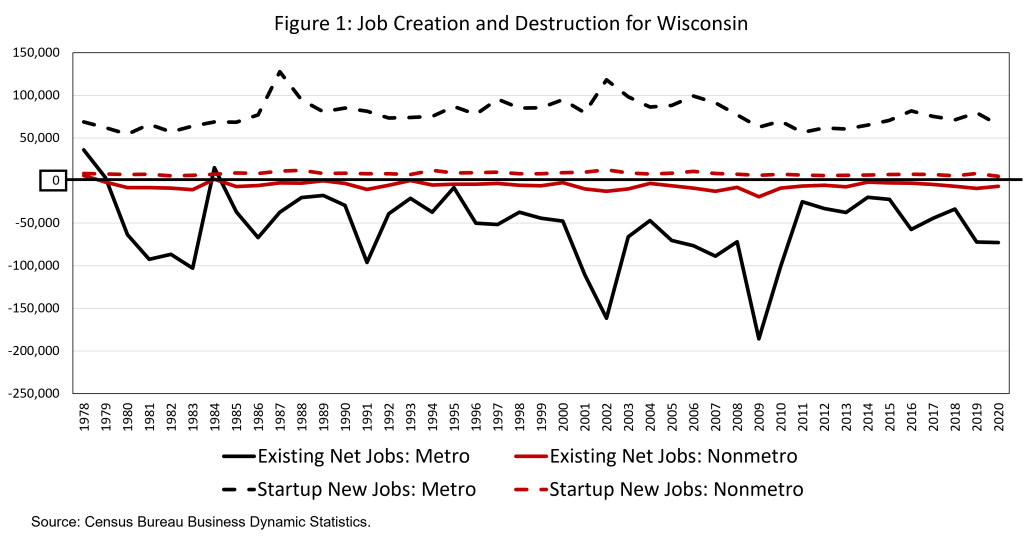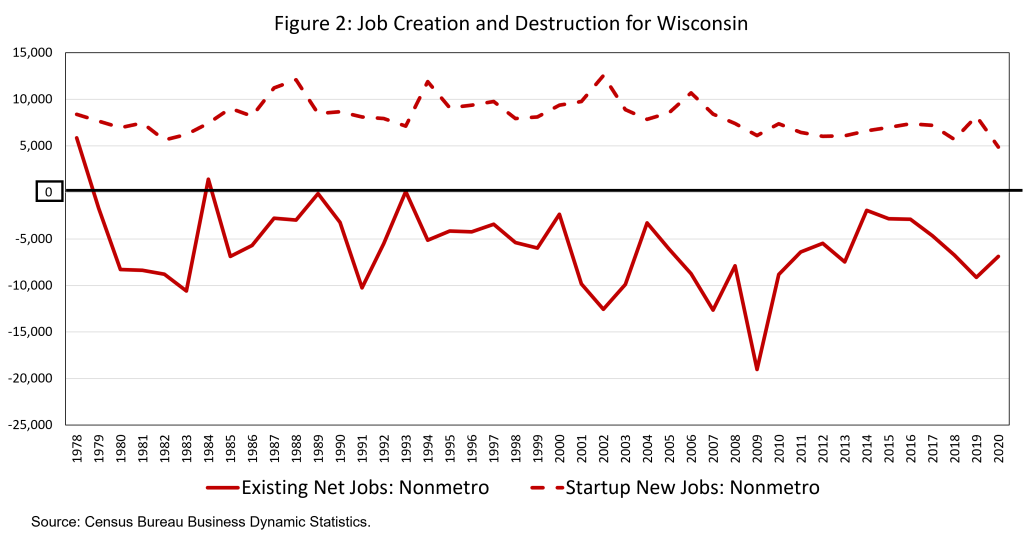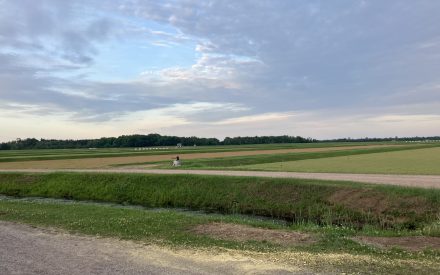(Image Source: Finn Hackshaw / Unsplash)
Wisconsin IDEA
Insight • Data • Economics • Analysis
New Businesses in Wisconsin Creates an Average of 86,000 Jobs Per Year
If a primary goal of economic growth policy is the creation of jobs and employment opportunities for Wisconsin residents, should policymakers and practitioners focus their limited resources on the formation of new businesses or the expansion of existing businesses? To gain insights into this question it is important to understand whether job growth comes predominantly from new or existing businesses. Let’s explore the Census Bureau Business Dynamic Statics for Wisconsin metropolitan and nonmetropolitan annually from 1978 to 2020.

A key dimension to this analysis is the realization that existing businesses can both add and subtract jobs, and it is the net difference that needs to be examined. Existing businesses can grow and add jobs, they can remain constant or contract or even close, resulting in job loss. Over the period examined, new business formation created an annual average of 86,321 jobs, but existing businesses shed or lost 59,945 for an average annual job gain of 26,376. Thus, for any given year between 1978 and 2020 new business formation drove job growth in Wisconsin. This is true not only for the state as a whole but also for metropolitan and nonmetropolitan Wisconsin (Figures 1 and 2).

Indeed, of the 43 years examined, existing businesses had positive net job growth in only three years: 1978, 1979, and 1984. For all other years (93% of all years examined), existing businesses shed more jobs than they added. The policy implications are clear: greater attention must be paid to new business formation if job growth is the goal of policy. This is not to say that existing businesses should be ignored, indeed, existing businesses added an annual average of 187,071 (at the same time existing businesses shed or lost 247,016 jobs annually). But, on balance, without new business creation, Wisconsin would be losing an average of 59,945 jobs per year. The policy implications are clear for both urban and rural parts of Wisconsin.















